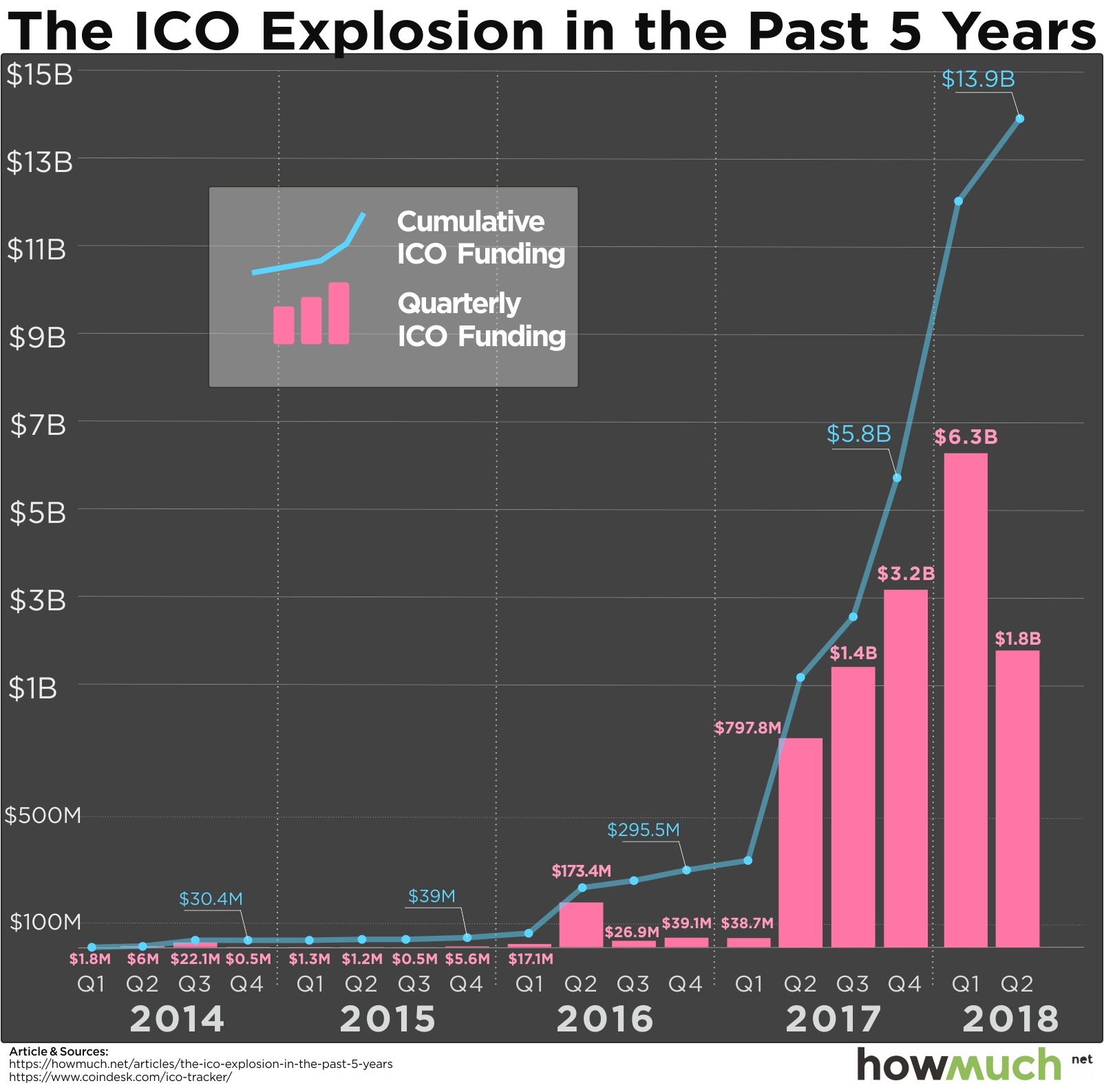The Explosive Growth of the ICO Market in One Visualization
Should cryptocurrencies be understood as securities? Should the government regulate initial coin offerings (ICOs) similar to initial public offerings (IPOs)? The authorities are still figuring out exactly what they should do, and how they answer these questions is enormously important for the cryptocurrency community. Our new graph demonstrates the multi-billion-dollar growth of this five-year-old marketplace, revealing just how high the stakes are for the SEC.
 We found the underlying data for our visualization over at Coindesk, a leader in reporting and tracking the cryptocurrency market. We created a bar for the value of ICOs in USD for each quarter of the past 5 years. We then added a blue line to represent cumulative funding for ICOs. This makes it easy to see just how much money is in play.
We found the underlying data for our visualization over at Coindesk, a leader in reporting and tracking the cryptocurrency market. We created a bar for the value of ICOs in USD for each quarter of the past 5 years. We then added a blue line to represent cumulative funding for ICOs. This makes it easy to see just how much money is in play.
Top Ten Biggest ICO Offerings
1. Telegram: $850M (2018)
2. Telegram: $850M (second round, 2018)
3. Dragon: $320M (2018)
4. Huobi: $300M (2018)
5. Filecoin: $262M (2017)
6. Tezos: $232M (2017)
7. Sirin Labs: $158M (2017)
8. Bancor: $153M (2017)
9. The DAO: $152M (2017)
10. Bankera: $151M (2017)
With numbers this big, it’s easy to see why the SEC might want to get involved. Investopedia defines a security as a “fungible, negotiable financial instrument that holds some type of monetary value.” According to the SEC’s chief cryptocurrency official, William Hinman, bitcoin and ether do not qualify as securities because of their decentralization. There is no third party expecting to make a return. In other words, there’s no underlying ownership in a company or a brokerage generating the initial public offering.
That being said, Hinman chose his words carefully, saying: “Over time, there may be other sufficiently decentralized networks and systems where regulating the tokens or coins that function on them as securities may not be required." That means the SEC will determine whether a cryptocurrency counts as a security on a case-by-case basis, like Ripple.
There are a lot of good reasons for the SEC to evaluate cryptocurrencies one at a time. For one thing, our graph shows how the market is still exploding, even if it has slowed down a bit in Q2 for 2018. The continued interest in ICOs is one reason the SEC created a fake website, warning investors about suspicious ICOs. After all, a lot of ICOs are clearly scams with fake founders and plagiarized whitepapers. Remember the one with Floyd Mayweather’s endorsement but which was later found to be fraud? Some cryptocurrencies are less outrageous but should still raise the eyebrow of a discerning investor, like the currency invented by a bunch of Russians called bananacoin.
All of this goes to show the SEC may still have a valuable role to play in eliminating bad actors from the market. What do you think? Should the SEC get involved in regulating the crypto market? Send us an email and tell us your opinion at press@howmuch.net.

